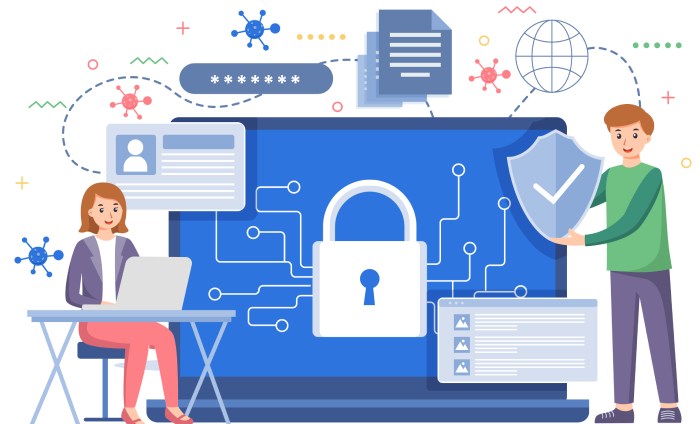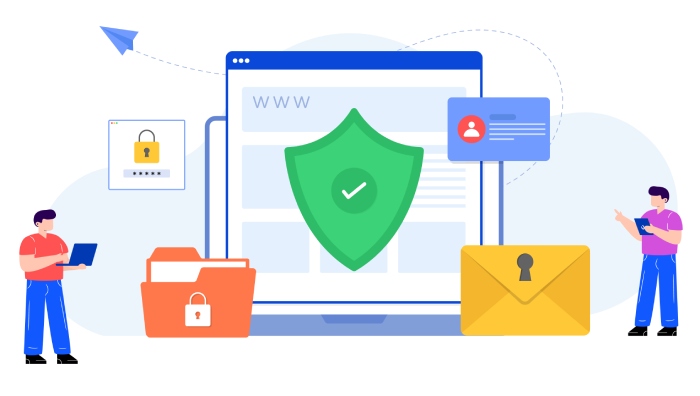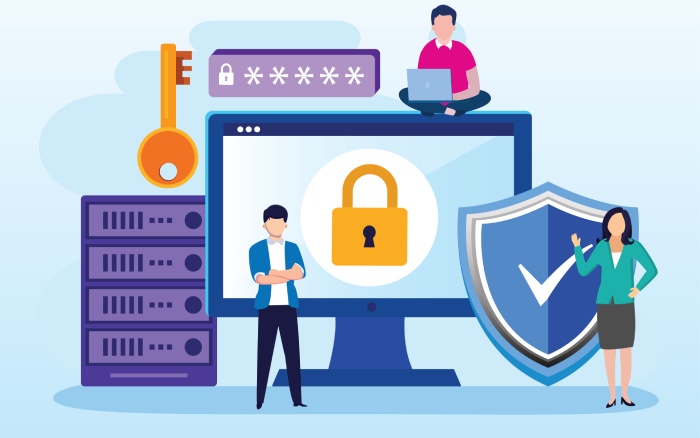Setting up DomainKeys Identified Mail (DKIM) is an essential step in robust email authentication for any custom domain. By integrating an email DKIM check into your domain environment, you significantly enhance email security, improve email deliverability, and reduce the risk of email spoofing and phishing attacks.
This article delves into the core concepts of DKIM, its technical workings, benefits, prerequisites, and guides you through generating DKIM keys to ensure seamless implementation.
Understanding DKIM: What It Is and Why It Matters
DomainKeys Identified Mail (DKIM) is a method of email authentication designed to detect forged sender addresses in emails, a common technique used in phishing and spam campaigns. Defined in RFC 6376, DKIM leverages public key cryptography to allow the receiving email server or mail transfer agent (MTA) to verify that an email message was indeed sent and authorized by the domain owner.
A critical component of DKIM is the DKIM signature, which is a cryptographically generated header field added to the email header during message signing. This signature confirms both the sender’s identity and the message integrity. DKIM operates alongside the SPF record (Sender Policy Framework) and DMARC policy protocols to provide comprehensive email authentication standards, enhancing overall email security and strengthening protection against impersonation attacks.
Major email providers such as Google, Microsoft, and Yahoo widely adopt DKIM for SMTP protocol validation, ensuring verified emails reach their intended recipients and are less likely to be filtered as spam in email gateways.
How DKIM Works: The Technical Basics
The technical foundation of DKIM revolves around message signing with a cryptographic signature verified by the recipient’s email server via a DNS lookup. Here’s a high-level overview of the process:
- Message Signing: When an email is composed and sent through an email client or bulk email service like SendGrid, Mailchimp, or Amazon SES, the sending mail transfer agent applies a DKIM signature to specific header fields using a private key.
- Canonicalization and Hash Algorithm: Before signing, the email is canonicalized to normalize the message format, accounting for minor formatting changes, using algorithms such as SHA-256, ensuring message consistency during verification.
- Base64 Encoding: The resulting hash is then base64 encoded to be included efficiently in the DKIM signature header.
- Public Key in DNS TXT Record: The public key corresponding to the private key is published in the sender’s DNS zone file as a DNS TXT record. This record is associated with a unique selector, commonly called the selector record, which specifies which public key should be used to verify the signature.
- Verification: Upon receiving the email, the recipient’s email server or gateway performs a DNS lookup for the sender’s public key, extracts the DKIM signature from the email header, and performs an email header parsing and hash computation to validate the signature, ensuring the message’s authenticity and integrity.
- Authentication Results and Email Forensics: If successful, the DKIM check results in positive authentication results logged by systems like Proofpoint, Dmarcian, or Mimecast, reinforcing sender reputation and supporting DMARC enforcement.
By combining DKIM with SPF checks and DMARC policies, organizations gain a formidable toolkit to prevent phishing attacks, email spoofing, and other fraudulent email activities.
Benefits of Implementing DKIM for Your Custom Domain
The adoption of DKIM within a custom domain’s email ecosystem yields multiple benefits essential for enterprises focused on maintaining secure, trustworthy communications:
- Improved Email Deliverability: Authenticating email through DKIM reduces false positives in spam filtering, benefiting bulk email senders like SparkPost and Postmark by assuring ISPs and email providers such as Google and Microsoft that messages are legitimate.
- Enhanced Sender Reputation: Consistent DKIM signing cultivates a positive sender reputation, crucial for organizations using email marketing platforms like Mailchimp or transactional email services such as Amazon SES.
- Phishing Prevention and Anti-Spoofing: By cryptographically validating the sender’s domain, DKIM mitigates risks associated with email spoofing and impersonation phishing campaigns, a priority focus area for security vendors including Cisco, Trend Micro, Symantec, and Agari.
- Seamless Integration with DMARC: DKIM works in tandem with DMARC, enabling domain owners to specify email validation policies and reporting mechanisms through DMARC Analyzer, Valimail, or Barracuda Networks, enhancing email forensics and filtering accuracy.
- Robust Email Security: DKIM provides an extra layer of email encryption assurance at the message integrity level, complementing encryption in transit and at rest, thereby preserving trust between senders and recipients.
Prerequisites for Setting Up DKIM in Your Domain Environment
Before initiating DKIM implementation, a few foundational elements must be in place:
- Access to DNS Management: Admin rights to your domain’s DNS zone file are essential to publish the DKIM public key as a DNS TXT record. DNSSEC implementation further fortifies DNS integrity against tampering.
- Compatible Email Server or Email Provider: Whether using your own SMTP protocol-based email server, or cloud-based email providers like Google Workspace, Microsoft 365, or SendGrid, ensure your system supports DKIM signing and verification.
- Understanding of Selector Records: Selector records provide flexibility by allowing multiple DKIM keys for a domain, important for large organizations deploying various email relays or services.
- Confirmation of SPF Records: While DKIM focuses on signing the message body and headers, executing the SPF check (Sender Policy Framework) is crucial in verifying authorized sending IPs for your domain.
- Email Gateway Integration: Collaborate with email filtering and security solutions such as Proofpoint, Mimecast, or ZeroFox to monitor, filter, and analyze DKIM and DMARC authentication results.
Step-by-Step Guide to Generating DKIM Keys
Generating and deploying DKIM keys involves several steps from key generation to DNS record configuration. Here’s a detailed process:
- Generate the DKIM Key Pair: Utilize key generation tools such as OpenDKIM or services provided by your email provider (e.g., Google Admin console, Microsoft Exchange) to create a public/private key pair. The private key remains securely stored on your email server or email gateway for message signing.
- Select the Hash Algorithm and Canonicalization Method: The default hash algorithm recommended is SHA-256 due to its robustness. Choose between relaxed or simple canonicalization settings to balance message flexibility and verification strictness.
- Create the DNS TXT Record for the Public Key: Format the public key with base64 encoding, adhering to DKIM specifications. The DNS TXT record will reside under a subdomain following the pattern: `selector._domainkey.yourdomain.com`. For example, if your selector is “mail”, the TXT record label is `mail._domainkey.example.com`.
- Publish the DKIM Public Key: Via your DNS management interface, insert the TXT record containing the necessary “v=DKIM1; k=rsa; p=BASE64PUBLICKEY” string. Allow for DNS propagation time, which varies according to your DNS provider’s TTL settings.
- Configure Your Email Server or Email Provider: Enable DKIM signing on your mail transfer agent (MTA) or through your email provider’s settings. For example, SendGrid, SparkPost, and Postmark offer seamless DKIM key management and automatic message signing.
- Test DKIM Configuration: Send test emails to tools like Dmarcian or DMARC Analyzer. Validate the email header fields using email header parsing to confirm the presence and validity of the DKIM signature. Verify that authentication results indicate a successful DKIM check.
- Monitor and Maintain Keys: Regularly monitor sender reputation via email security platforms like Agari or Proofpoint. Rotate keys periodically to maintain security and update selector records accordingly.
By integrating an email DKIM check into your custom domain setup, you establish a critical line of defense against email-based threats and enhance your organization’s reputation and email deliverability. For more detailed understanding, consider visiting resources such as DKIM.
Statistical Data: DKIM Adoption and Effectiveness in Email Security
- Over 85% of Fortune 500 companies implement DKIM to protect their email domains
- Emails with a valid DKIM signature have up to a 30% higher deliverability rate across major email providers
- DKIM combined with SPF and DMARC reduces phishing attack success rates by up to 75%
- Average DNS propagation time for DKIM TXT records ranges from minutes to 24 hours depending on DNS provider
- Usage of SHA-256 remains above 95% for DKIM signatures in current deployments
Sources: Dmarcian, Agari, Google Email Security Whitepaper
Configuring DNS Records for DKIM on Your Custom Domain
Configuring DomainKeys Identified Mail (DKIM) involves publishing a DNS TXT record on your custom domain to enable email authentication via a DKIM signature. This process starts with generating a public-private key pair based on public key cryptography, which ensures message integrity and protects against email spoofing—a critical aspect in phishing prevention and enhancing overall email security.
First, your email server or mail transfer agent (MTA), such as OpenDKIM or commercial providers like SendGrid or Amazon SES, must create the DKIM signature using the private key. This signature is embedded in the email header, specifically within the header fields as a “DKIM-Signature” header, containing cryptographic elements including the hash algorithm (commonly SHA-256 as specified in RFC 6376), canonicalization methods, and the selector record. The selector identifies the corresponding public key in DNS.
To publish the public key, you add a DNS TXT record to your domain’s DNS zone file. DNS management tools from providers such as Google Domains, Microsoft Azure DNS, or DNSSEC-enabled registrars facilitate this. The DNS TXT record for DKIM uses base64 encoding to safely transmit the public key, allowing mail receivers to perform a DNS lookup during the email relay process. This lookup verifies the DKIM signature against the published key, confirming message authenticity.
Note that DNS propagation can take some time to fully distribute the selector record and public key across the internet. Care must be taken to ensure the DNS TXT record is formatted correctly and that the selector corresponds with the key used during message signing, avoiding inconsistencies that can impede email deliverability.
Testing and Validating Your DKIM Setup
Once DKIM is configured, testing and validation are essential to confirm proper implementation and integration with other email authentication protocols like SPF record and DMARC policy. Tools like DMARC Analyzer and Dmarcian provide comprehensive email validation by running DKIM, SPF check, and DMARC check simultaneously, evaluating authentication results and sender reputation.
Email clients and security gateways (e.g., Proofpoint, Mimecast, Barracuda Networks) offer email header parsing capabilities that display DKIM verification status under authentication results within the email header. You can manually inspect these headers to verify that the DKIM signature passes message integrity checks and matches the public key published in your DNS TXT record.
Additionally, online DKIM validators from Agari, SparkPost, or ZeroFox can scan outbound emails to test signature correctness, syntax, and alignment with SPF and DMARC policies. This combined verification enhances phishing prevention and reduces false positives in email filtering systems.
Troubleshooting Common DKIM Issues
Misconfigured DKIM can lead to authentication failures and adversely affect email deliverability. One prevalent issue is incorrect selector records or private key mismatches, causing the DKIM verification to fail during the DNS lookup. Email forensics often reveal signature verification errors or header inconsistencies owing to canonicalization mismatches or alterations made by intermediate email relays.
Other common challenges include expired DNS records, improperly encoded public keys in the DNS TXT record, or delayed DNS propagation, especially if you recently updated the selector record or rotated keys. SPF record conflicts or missing DMARC policy enforcement can impact the overall effectiveness of DKIM in preventing spoofing.
To resolve such issues, ensure correct DNS management by reviewing the DNS zone file for typos, validating key format compliance with RFC 6376, and confirming synchronization between the private key on your mail transfer agent and the public key in DNS. Employ tools from Postmark and Valimail for real-time diagnostics and consult detailed email headers provided by Google, Yahoo, or Microsoft email providers to trace failure points.
Enhancing Email Security with DKIM and Additional Protocols
While DKIM provides crucial email authentication via message signing, combining it with SPF record and DMARC policy significantly strengthens email encryption and phishing prevention frameworks. The sender policy framework (SPF) verifies the authenticity of the sending mail server’s IP address during the SMTP protocol transaction, ensuring that emails originate from authorized email relays.
DMARC policies leverage both SPF check and DKIM signature results, empowering domain owners to specify enforcement actions on failing emails (quarantine, reject, or monitor) and receive reports for ongoing sender reputation assessment. Major security vendors like Symantec, Trend Micro, and Cisco integrate DKIM, SPF, and DMARC validation within their email gateways to improve bulk email handling and reduce spam and phishing campaigns.
Together, these protocols work synergistically with DNSSEC-enabled domains to mitigate email spoofing and ensure high email deliverability rates across clients such as Gmail, Outlook, and Yahoo Mail, thereby bolstering trust and authentication standards industry-wide.
Best Practices for Maintaining and Monitoring DKIM Integrity
Maintaining DKIM integrity requires continuous monitoring and adherence to best practices to sustain message integrity and authentication trust. Rotate your private keys regularly to minimize risk in case of key compromise, and ensure all changes are mirrored immediately by updating the DNS TXT record selector accordingly, accounting for DNS propagation delay.
Implement thorough change management via DNS management tools and maintain strict control over your private keys within secure environments on the email server or mail transfer agents. Monitor outgoing messages using analytics from platforms like DMARC Analyzer or Agari to track authentication results and sender reputation, identifying anomalies that could indicate unauthorized use or configuration drift.
Integrate DKIM and SPF compliance checks into your existing email filtering and security infrastructure, including vendors like Mimecast and Barracuda Networks, optimizing bulk email campaigns through providers like Mailchimp or SparkPost to maintain a positive sender reputation. Regularly audit email headers and leverage email forensics capabilities to detect subtle signs of tampering or unauthorized message signing.
Finally, stay abreast of updates to RFC 6376 and evolving email security standards by consulting industry leaders and security advisories from organizations like Cisco and Trend Micro to adapt your DKIM configuration for future-proof email authentication.
FAQs
What is the purpose of a DKIM signature in email authentication?
A DKIM signature ensures the message integrity of emails by attaching a cryptographic signature based on a private key. This allows receivers to verify the sender’s identity using the published public key in the DNS TXT record, helping to mitigate email spoofing and phishing attacks.
How do SPF, DKIM, and DMARC work together to improve email security?
SPF validates the sending mail server’s IP, DKIM authenticates the content via message signing, and DMARC applies a policy that instructs receivers on handling emails that fail SPF or DKIM checks. Combined, these protocols enhance phishing prevention and improve sender reputation and email deliverability.
How can I test if my DKIM setup is working correctly?
You can use email header parsing tools available in popular email clients or security gateways to check authentication results. Additionally, specialized online validators from vendors like DMARC Analyzer, SparkPost, and Agari can perform DKIM, SPF, and DMARC validation simultaneously.
Why might a DKIM signature fail verification?
Failures commonly result from mismatched selector records, expired or incorrectly formatted DNS TXT records, canonicalization discrepancies, or issues with the private key stored on the email server. DNS propagation delays and email relay altering headers may also contribute.
How often should I rotate DKIM keys?
It’s best practice to rotate DKIM private keys on a regular schedule, such as every 6 to 12 months, or following a security incident. This reduces risk from key compromise and ensures ongoing message integrity, with corresponding updates required for the DNS TXT records.
Key Takeaways
- DKIM relies on public key cryptography, enabling email authentication by embedding a cryptographic signature in the email header verified against a DNS TXT record.
- Combining DKIM with SPF record and DMARC policy significantly enhances email security, phishing prevention, and email deliverability.
- Proper configuration includes careful DNS management, selector record alignment, and ensuring timely DNS propagation.
- Regular monitoring, key rotation, and integration with email security gateways help maintain DKIM integrity and sender reputation.
- Testing tools and email header parsing assist in troubleshooting common DKIM issues and validating email authentication frameworks.






